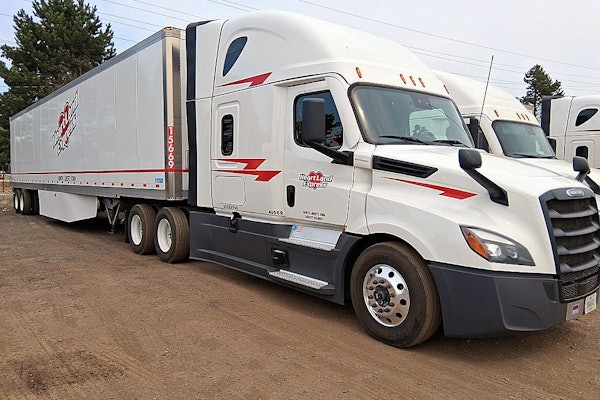The U.S. Environmental Protection Agency is moving forward with the 2027 timeline for its heavy-duty NOx rule—currently set to take effect with the 2027 model year—but says changes are in store.
The American Trucking Associations (ATA), National Tank Truck Carriers, Truckload Carriers Association, and 49 state trucking associations in August penned a letter to EPA, asking the regulator to push implementation to 2031, citing "substantial compliance costs and operational burdens at a time when the trucking industry is already contending with historically difficult market conditions."
Administrator Lee Zeldin in March announced EPA was reevaluating the Biden-era 2022 Heavy-Duty Engine and Vehicle rule that regulates oxides of nitrogen (NOx) and other emissions beginning with Model Year 2027.
EPA told CCJ on Monday the agency continues to reevaluate the rule and plans to propose a rule in the spring of 2026 that will take effect the following model year.
"If finalized," EPA said, "the action will make major changes to the program requirements while maintaining the Model Year 2027 start of the standards, which can significantly reduce the cost of new heavy-duty vehicles, while still protecting human health and the environment, and avoiding regulatory distortions of the heavy-duty vehicle market."
A spokesperson for Daimler Truck North America told CCJ Monday that the company appreciates EPA's efforts to reduce costs while maintaining a focus on air quality and legislative consistency, adding "[This] announcement provides the regulatory certainty needed for effective production planning and customer support."
The new limits currently tighten tailpipe NOx emissions to a level 80%-plus below the current standard and reduce the particulate matter limit by 50%. The agency also will require that OEMs extend warranties to 450,000 miles from 100,000 and useful life limits to 650,000 miles from 435,000 miles.
[Related: Truck aftertreatment systems are here to stay]
EPA did not disclose plans for its 2026 revised proposal, but the extended warranty has been cited by OEMs as a major driver of increased costs for MY2027 trucks. Given that EPA expects its changes to the current NOx regulations to drive down costs, warranty provisions are likely to be affected.
The standards require heavy-duty commercial vehicles to limit nitrogen oxide (NOx) emissions to 0.035 grams per horsepower-hour during normal operation, 0.050 grams at low load, and 10.0 grams at idle, and will also increase the useful life of governed vehicles by 1.5 to 2.5 times and yield emissions warranties that are 2.8 to 4.5 times longer — provisions that guarantee that as vehicles age, they will continue to meet EPA’s more stringent emissions standards for a longer period of time.
The 1,153-page rule also requires manufacturers to better ensure that vehicle engines and emission control systems work properly on the road, including demonstrating that engines are designed to prevent drivers and fleets from tampering with emission controls by limiting tamper-prone access to electronic pollution controls.
The decision to remain on course is somewhat of a reversal in recent emissions policy that has seen EPA dismantle California’s vehicle emissions standards, target for repeal the Endangerment Finding — which would roll back the Greenhouse Gas Phase 3 rule — and help unravel the Clean Truck Partnership between California and truck and engine manufacturers.
ATA Vice President of Energy and Environmental Affairs Patrick Kelly noted that while the ATA appreciates the EPA's efforts to reevaluate heavy-duty engine and vehicle standards to reduce costs for new trucks—"action [that] will help preserve trucking jobs and keep freight moving safely and efficiently," he said—he also encouraged the EPA to implement flexibilities to reduce the cost and complexity of the Biden-era rule.
"Heavy-duty truck emissions have been reduced by 99% since 1970, and further reducing NOx by over 80% requires costly new emissions control equipment that remains untested in the marketplace," he added. "The underlying 2027 implementation timeline raises serious concerns for America's truckers, as the rule is likely to drive up equipment prices at a time when the nation's motor carriers are already bracing for steep increases."














